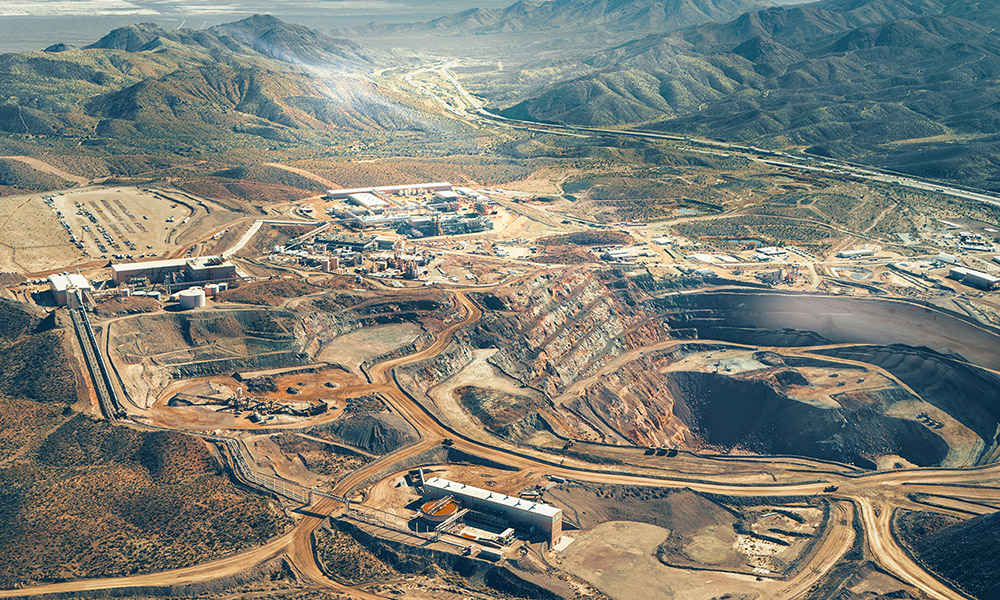As the world grows increasingly reliant on technology, the United States faces an urgent challenge: breaking China’s dominance in the rare earth supply chain. Rare earth elements (REEs)—critical components in electric vehicles (EVs), wind turbines, and defense technologies—are abundant in the Earth’s crust but notoriously difficult to mine and process. For decades, China has controlled the majority of that supply chain, leaving the U.S. and other nations dependent on Beijing for these essential materials.
The Scale of China’s Rare Earth Dominance
In 2023, the United States had approximately 1.8 million metric tonnes of rare earth reserves and produced 43,000 metric tonnes that year—the second-highest output globally. In comparison, China mined 240,000 metric tonnes, making it the world’s largest producer, according to the U.S. Geological Survey. This production gap reflects a larger issue: while the U.S. has the raw materials, it lacks the infrastructure and capacity to process and refine rare earth elements on a large scale.
China’s dominance extends far beyond mining. The country controls about 85 percent of the global processing capacity for rare earth elements and produces around 90 percent of the world’s rare earth magnets. These magnets—composed primarily of neodymium iron boron (NdFeB)—are crucial components in advanced technologies like wind turbines, robotics, smartphones, and defense applications. This concentration of control gives China a significant advantage in both the civilian and military technology sectors.
A Complex and Concentrated Supply Chain
Despite being the world’s largest producer, China still imported 217,000 metric tonnes of raw rare earth materials in 2023. This paradox highlights the complexity of the rare earth supply chain. Extracting rare earth elements from the earth is only the first step. The real challenge lies in processing them into oxides, metals, and alloys used in high-tech manufacturing.
$21B
The projected rare earth market value by 2033
“The availability of concentrates from mines all over the world is a given,” said Thomas Kruemmer, director of Ginger International Trade & Investment PTE, Ltd. “The trouble begins with, if you produce rare earths, who do you sell it to? You don’t have a market.”
China’s advantage comes from its dominance of the midstream processing stage. The country’s vast network of refining facilities allows it to control the value chain, from raw material extraction to finished products like NdFeB magnets. These magnets are found in everything from electric vehicle motors to wind turbines, drones, and medical devices. As a result, any disruption in China’s rare earth supply chain could have widespread consequences for industries worldwide.
U.S. Rare Earths Production Lags Behind China
While the United States has substantial reserves of rare earth elements, its production and processing capabilities remain limited compared to China. The Mountain Pass mine in California, operated by MP Materials, is the only significant U.S. facility capable of mining and separating rare earth elements. However, much of the ore extracted from Mountain Pass is still shipped to China for processing, highlighting the U.S.’s dependence on foreign infrastructure.

An aerial view of MP Material’s Mountain Pass mine in California.
Processing rare earth elements is a complex, multi-step process that involves separating raw materials into their constituent elements and then transforming them into oxides, metals, and alloys. Each of these steps requires specialized facilities, which have been outsourced to China over the past few decades. This outsourcing has left the U.S. vulnerable to supply disruptions and price fluctuations in the global market.
The limited domestic processing infrastructure in the U.S. is a key factor that has hindered the country’s ability to compete with China. Building the necessary facilities requires significant capital investment, technological expertise, and regulatory approvals, all of which take time to develop.
China processes roughly 85 percent of rare earth elements and produces 90 percent of the world’s rare earth magnets.
Demand for REEs Set to Skyrocket
The demand for rare earth elements is expected to grow by 400 percent to 600 percent over the next few decades, driven by the global push toward electrification and renewable energy, according to a White House report. As industries shift away from fossil fuels, rare earth elements are becoming increasingly critical in technologies like electric vehicles, wind turbines, and energy storage systems.
A single 3-megawatt direct-drive wind turbine can use up to 2 metric tonnes of rare earth magnets, according to Lynas Rare Earths Ltd. The demand for rare earth elements is not only growing in the energy sector but also in consumer electronics, defense technologies, and medical devices. In fact, nearly all electric vehicles use permanent magnets in their motors due to their efficiency, compact size, and power.
Market analysts project that the global rare earth market could top $21 billion by 2033, according to investment research firm The Oregon Group. The increased demand for neodymium and praseodymium (NdPr)—essential components of high-performance magnets—is expected to drive much of this growth, particularly as the electric vehicle industry continues to expand.
900
pounds: The amount of rare earths used in one U.S. F-35 fighter jet.
Critical for National Security
Beyond consumer technology, rare earth elements are vital for national security. The U.S. Department of Defense relies on rare earths for a wide range of military applications, from missile guidance systems to advanced aircraft. For instance, an F-35 Lightning II fighter jet contains more than 900 pounds of rare earth elements, while a Virginia-class submarine requires 9,200 pounds.
In a 2021 supply chain assessment report, the Biden-Harris Administration underscored that “our over-reliance on foreign sources and adversarial nations for critical minerals and materials poses national and economic security threats.” The U.S. government has since made securing domestic supply chains for rare earth elements a top priority, recognizing the strategic vulnerabilities posed by China’s dominance in this field.
Barriers to Competing with China
China’s grip on the rare earth supply chain is reinforced by its ability to operate at very low costs. The country’s rare earth sector benefits from extensive government subsidies, state-owned enterprises, and a well-established infrastructure that spans mining, processing, and manufacturing. Competing with China’s vertically integrated supply chain is a monumental challenge for the U.S.
“The issues around reintroducing rare earth value chains in the West are an enormous task,” said Kruemmer. For example, while the U.S. has the capacity to mine certain rare earth elements, such as lanthanum and cerium, producing these materials domestically is not economically feasible at current market prices. Over the past 15 years, the price of lanthanum and cerium has fallen from $12 per kilogram to less than $1 per kilogram, largely due to China’s efficient processing capabilities.
Lanthanum and cerium are used in a variety of industrial applications, including oil refining and automotive catalytic converters. However, their low market value makes it difficult for U.S. producers to compete with China, where the costs of production are significantly lower. Reintroducing large-scale rare earth production in the U.S. would likely increase costs for manufacturers, which could ultimately be passed on to consumers in the form of higher prices.
Our over-reliance on foreign sources and adversarial nations for critical minerals and materials posed national and economic security threats.
U.S. Efforts to Rebuild Supply Chain
To reduce its dependence on China, the U.S. Department of Defense (DoD) is spearheading efforts to create a “Mine-to-Magnet” supply chain. Since 2020, the DoD has awarded more than $439 million to rare earth companies to help develop domestic mining, processing, and manufacturing capabilities. This initiative is seen as a critical step toward ensuring the U.S. can meet its own demand for rare earth elements, particularly for defense applications.
One of the most prominent projects involves the construction of a new magnet manufacturing plant in South Carolina, operated by e-VAC Magnetics, a subsidiary of Germany’s VAC Group. The DoD has invested $94.1 million in this facility, which will produce NdFeB magnets for electric vehicles and defense technologies. The plant, located on an 85-acre industrial park in Sumter County, is expected to be operational by late 2025. E-VAC has already signed long-term supply agreements with automakers like GM, securing contracts to supply magnets for a range of electric vehicles, including the Chevrolet Silverado and GMC Hummer EV.
MP Materials, the only integrated rare earth mining and separation facility in the United States, is another key player in the effort to rebuild the domestic supply chain. Located in Mountain Pass, California, MP Materials has one of the highest-quality rare earth deposits in the world, with a rare earth content averaging around 6 percent. The company has ramped up production in recent years and now produces roughly 15 percent of the global supply of rare earth elements.
MP Materials is also building a manufacturing facility in Fort Worth, Texas, where it plans to produce NdFeB magnets by 2025. These magnets will be used in electric vehicles and defense applications, including contracts with General Motors and defense contractors. MP Materials’ goal is to build a fully integrated “Mine-to-Magnet” supply chain, ensuring that rare earth elements extracted from Mountain Pass are processed and manufactured into finished products domestically.
240,000
metric tonnes: The amount of rare earth elements China mined in 2023, the highest in the world.
New U.S. Projects Aim to Reduce Reliance on Imports
In addition to MP Materials and e-VAC Magnetics, several other companies are working to develop rare earth processing and manufacturing capabilities within the U.S. Lynas USA, a subsidiary of Australian-based Lynas Rare Earths Ltd., is building a rare earth processing plant on the Gulf Coast in Seadrift, Texas. The facility will separate rare earth elements sourced from Lynas’s mines in Australia for use in U.S. commercial and defense manufacturing.
However, Lynas has faced challenges in securing environmental permits for its Texas plant, particularly concerning wastewater management. The project, initially expected to begin operations in 2024, has been delayed due to regulatory hurdles, underscoring the complexities involved in building new rare earth facilities in the U.S.
Meanwhile, American Rare Earths Ltd. is exploring a deposit at its Halleck Creek location in Wyoming. The company’s early-stage exploration indicates that the deposit contains approximately 7.48 million metric tonnes of rare earth oxides, making it one of the largest known rare earth deposits in North America. But a large deposit like this one doesn’t necessarily translate to a high grade deposit.
The demand for rare earth elements is expected to grow by as much as 600% in the coming decades.
The total rare earth oxide (TREO) grade of the deposit is 0.32%, according to the company’s technical report from February 2024. They estimate a recovery rate of 63.9% for NdPr oxide and projected NdPr oxide output of 1.5 million metric tonnes per year. Recovery rates for other REE include Terbium: 70.2 percent, Dysprosium: 66.5 percent, SEG: 70.1 percent, and Lanthanum: 68.6 percent.
American Rare Earths plans to move forward with a feasibility study and is actively seeking partnerships with magnet manufacturers and automotive companies to establish a complete value chain.
Another significant project is the Bear Lodge mine in Wyoming, owned by Rare Element Resources (RER) and backed by General Atomics, a key supplier of drones to the Pentagon. Bear Lodge contains an estimated six million metric tonnes of rare earth resources, including 50,000 metric tonnes of NdPr. RER has begun building a demonstration plant to advance the development of the mine, with plans to produce rare earth materials for use in defense applications like missile systems and aircraft.
1.8M
metric tonnes: The estimated rare earth reserves held by the United States.
Environmental and Economic Challenges Ahead
While these efforts are promising, the environmental challenges associated with rare earth mining and processing cannot be ignored. Mining rare earth elements generates significant amounts of waste, including hazardous materials like radioactive residue. According to the Harvard International Review, mining just one tonne of rare earth elements can produce nearly 30 pounds of dust, up to 12,000 cubic meters of waste gas, and roughly a tonne of wastewater. Balancing the need to secure critical materials with environmental sustainability will be a key challenge as the U.S. works to rebuild its rare earth supply chain.
Creating a circular economy through recycling
Recycling could be part of the answer. Consider the wind turbine, which contains a significant amount of NdFeB permanent magnets. What happens to those parts when the turbine, which has a lifespan of about 20 years, is no longer functional?
The U.S. is trying to create a ‘Mine-to-Magnet’ supply chain to reduce reliance on China.
A small amount — somewhere between 1 to 5 percent — of the world’s rare earth elements are recovered or recycled, which means that hundreds of thousands of tons of end-of-life NdFeB rare earth magnets are scrapped and sit idle in landfills or are exported overseas to China and other less developed economies, says Noveon Magnetics, which is on a mission to change that. Their new 145,000 square foot recycling facility in San Marcos, Texas, is expected to produce roughly 2,000 tons of magnets annually through recycling.
“Our process introduces a new methodology within our waste infrastructure by optimizing material recovery while also lowering energy consumption and bypassing many of the fundamental steps in magnet manufacturing that make traditional magnet manufacturing processes so hazardous to the environment,” said Noveon CEO Scott Dun in 2023. For every ton Noveon recycles, 11 tons of CO2 emissions are cut, the company notes.
Rebuilding the Supply Chain Will Take Time
As global demand for rare earth elements continues to grow, the U.S. faces significant challenges in reducing its dependence on China’s supply chain. Rebuilding domestic production and processing infrastructure will require sustained investment, technological innovation, and regulatory approval. While efforts are underway to develop a domestic “Mine-to-Magnet” supply chain, the road ahead is long, and success will not come quickly.
With right strategies and long-term planning, the U.S. has the potential opportunity to reclaim a portion of the rare earth supply chain, safeguard its technological future, and strengthen its national security by reducing reliance on foreign sources, but it’s not going to be easy.






